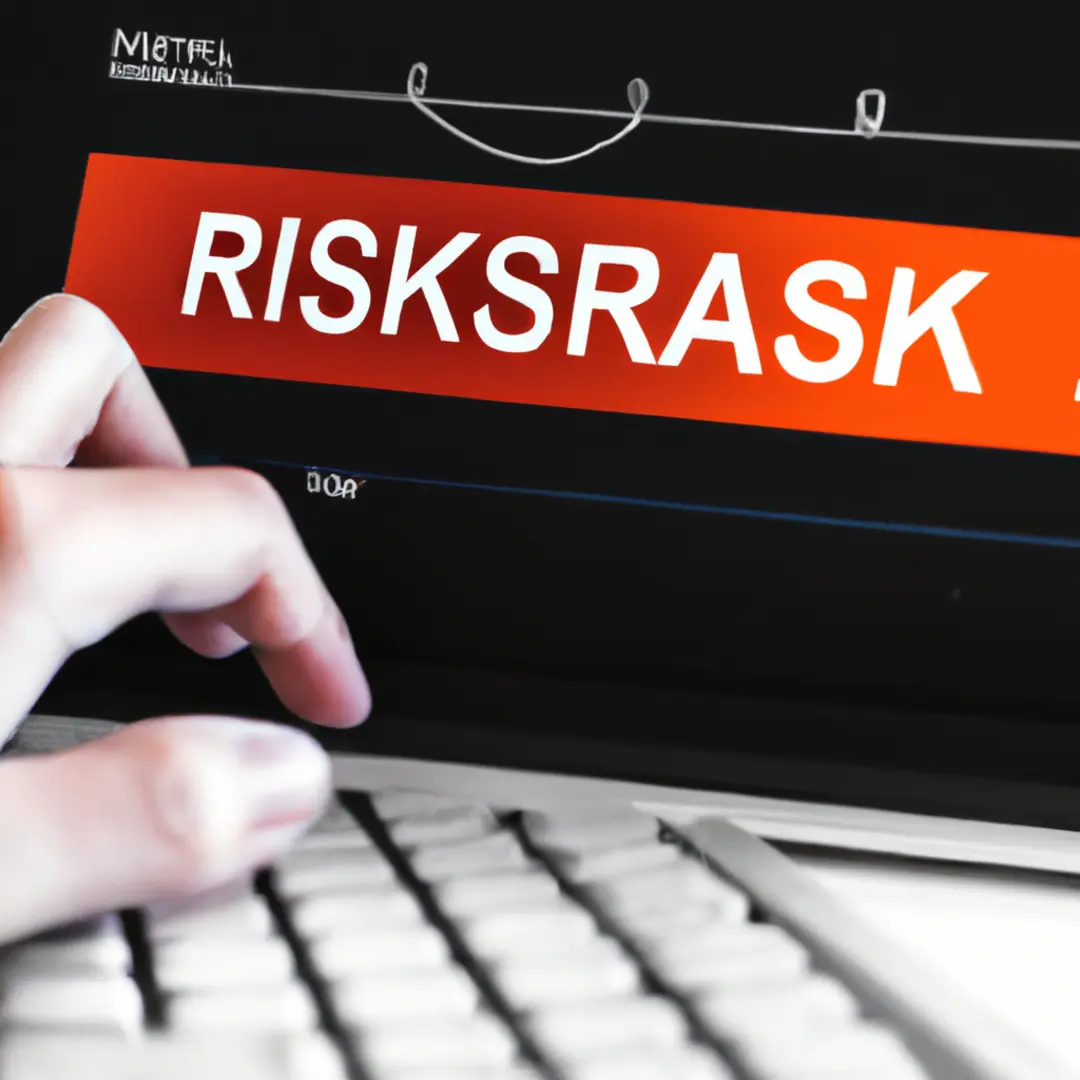What are Risk Assessment Tools?
Table of contents
- A Quick Dip into Risk Assessment Tools
- Categories of Risk Assessment Tools
- Detailed Look at Qualitative Risk Assessment Tools
- Unraveling Quantitative Risk Assessment Tools
- Hybrid Risk Assessment Tools: Advantages and Use Cases
- Your Guide to Choosing the Right Risk Assessment Tool
- Key Features of Effective Risk Assessment Tools
- Implementing Risk Assessment Tools into Business Operations
- Rise of Technology in Risk Assessment Tools
- Challenges and Constraints of Risk Assessment Tools
- Best Practices for Optimally Exploiting Risk Assessment Tools
- Wrapping Up
A Quick Dip into Risk Assessment Tools

Risk assessment is quite crucial across numerous fields. It zeroes in on possible risks, evaluates their impact, and helps in creating counter-strategies. Risk assessment tools are made to make this assessment process smoother, efficient, and more useful.
Applying Risk Assessment Across Different Fields
Risk assessment is a recurring need in fields like finance, healthcare, IT, and construction. Stakeholders need to understand potential risks to minimize negative impacts and protect their interests. Risk assessment tools aid in carrying out this exercise in an organized and methodical manner.
Why Risk Assessment Matters to Businesses & Organizations
In business, risk assessment is essential. It helps in identifying threats and opportunities, in making informed decisions, in resource allocation, and in improving overall operations. Risk assessment tools help in this process by providing the necessary frameworks and techniques for analyzing data leading longer-term successes.
A Closer Look at the Risk Assessment Process
Typically, the risk assessment process includes several stages. It begins with risk identification, followed by risk analysis, evaluation, and treatment, which includes mitigation and monitoring efforts. Risk assessment tools are instrumental in each of these stages.
Categories of Risk Assessment Tools

We can place risk assessment tools into three primary categories – qualitative, quantitative, and hybrid. Each type serves a unique purpose and caters to different requirements.
Qualitative Risk Assessment Tools
These tools concentrate on assessing risks based on non-numerical factors such as likelihood, severity, and impact. Examples of qualitative risk assessment tools range from checklists, questionnaires, SWOT analysis to brainstorming sessions and workshops.
Quantitative Risk Assessment Tools
Quantitative risk assessment tools leverage numerical data and statistical techniques to evaluate risks. These tools enable a precise understanding of risk exposure by assigning probabilities and impacts to risks. Some commonly used numerical tools include Fault Tree Analysis (FTA), Failure Mode and Effects Analysis (FMEA), and Monte Carlo Simulation.
Hybrid Risk Assessment Tools
Hybrids integrate both qualitative and quantitative methodologies to offer a comprehensive risk assessment process. For example – the Bowtie analysis, risk matrix, and HAZOP (Hazard and Operability Study).
Detailed Look at Qualitative Risk Assessment Tools

Qualitative risk assessment tools come in handy when we need to understand and analyze risk factors that can’t be precisely measured. These tools depend on data derived from human judgement and interpretation.
Checklists and Questionnaires
Checklists and questionnaires are simple tools used in risk identification and evaluation. They offer a structured approach and help accumulate information from various stakeholders, enabling a broader understanding of potential risks.
SWOT Analysis (Strengths, Weaknesses, Opportunities, Threats)
The SWOT analysis tool assesses risks and opportunities by breaking down strengths, weaknesses, opportunities, and threats, thereby helping organizations identify internal and external factors that can pose risks or offer strategic benefits.
Delphi Technique for Risk Identification
This technique relies on gathering opinions and feedback from a panel of experts, allowing comprehensive risk assessment by covering multiple perspectives.
Brainstorming and Workshops
These interactive sessions foster creativity and encourage open discussions leading to a comprehensive risk assessment. Brainstorming and workshops also enhance the quality of analysis and problem-solving through their collaborative nature.
Unraveling Quantitative Risk Assessment Tools

Quantitative risk assessment tools deploy mathematical models and statistical analysis to achieve an accurate understanding of risks and potential impacts.
Fault Tree Analysis (FTA)
The Fault Tree Analysis tool uses graphics to trace the causes of an undesired event back to its root causes. This tool is commonly found in critical industries like nuclear power plants and aviation.
Failure Mode and Effects Analysis (FMEA)
FMEA is used to identify potential failures and their consequences. By quantifying the potential severity, occurrence, and detection of each failure mode, it enables organizations to prioritize and address risks effectively.
Monte Carlo Simulation
Monte Carlo Simulation is a computational technique used to model & simulate complex systems or processes and predict possible outcomes. This simulation method enables organizations to understand the range of potential outcomes and evaluate associated risks.
Software Solutions for Quantitative Risk Analysis
There are several software tools available that provide integrated platforms for quantitative risk analysis, offering a range of features like data input, model building, simulations, and visualizing results.
Hybrid Risk Assessment Tools: Advantages and Use Cases

Hybrid risk assessment tools fuse both qualitative and quantitative methodologies, offering a more nuanced understanding of risks. They enable organizations to make well-informed decisions.
Bowtie Analysis
Bowtie analysis is a graphical tool that analyses the causes, consequences, and preventive measures associated with a particular risk event. It helps organizations identify critical risk controls and fosters clear communication about risks.
Risk Matrix
A risk matrix assesses risks based on likelihood and consequence. It categorizes risks into different levels of severity, guiding organizations in prioritizing risk mitigation efforts. Risk matrices help to visualize risks, making them easier to understand & communicate.
HAZOP (Hazard and Operability Study)
HAZOP is used to identify potential hazards and operability problems. It involves a systematic review to identify deviations from the intended design and potential risks.
Your Guide to Choosing the Right Risk Assessment Tool

Picking the right tool is essential. Several factors like the scope of your project, industry regulations, available resources should be considered while choosing a risk assessment tool.
Evaluating Your Project: Scope and Complexity
The first step is to assess the scale and complexity of your project. This will help to determine whether a qualitative, quantitative or hybrid tool is more suitable.
Consider Industry & Regulatory Standards
Each industry has its own set of rules related to risk management. It’s important to pick a tool that matches with these industry-specific standards for a robust and effective risk assessment process.
Assess Available Resources
Take into account resources like team expertise, budget, time constraints etc. Some tools may require specialized knowledge or training. It’s always better to choose a tool that aligns well with your resources.
Key Features of Effective Risk Assessment Tools

While choosing a tool, consider certain key aspects that contribute to its efficiency and appropriateness.
User-Friendliness & Accessibility
An effective risk assessment tool should be user-friendly, intuitive, and accessible from multiple devices or locations.
Customizability & Scalability
An excellent risk assessment tool should be customizable and scalable to adjust with changes as the company grows.
Integration with Other Systems
Integration with existing systems, like project management software, can improve efficiency and streamline the risk assessment process.
Reporting & Documentation Capabilities
A reliable tool should be able to create comprehensive reports, ensuring clear communication of risks and aiding decision-making processes.
Implementing Risk Assessment Tools into Business Operations
Integrating these tools into existing workflows is a part of this process, as is fostering a risk aware culture in the organization.
Training Programs for Teams
Proper training ensures that everyone understands the tool and knows how to use it. Capacity building programs can help familiarize employees with the tool and enhance their risk management skills.
Maintenance of Risk Registers
Risk registers record and track identified risks and their mitigation strategies. Regular updating is necessary to keep it accurate and current.
Incorporate Risk Assessment in Decision-Making Processes
Risk assessment should be a part of decision-making processes at all levels. This approach increases the organization’s resilience.
Rise of Technology in Risk Assessment Tools

Technological advancements have added innovative features and capabilities to risk assessment tools.
Artificial Intelligence (AI) and Machine Learning (ML) Advancements
AI and ML can be utilized in risk assessment tools to automate data analysis and improve predictive capabilities. These technologies can identify patterns, detect anomalies, and make accurate predictions.
Big Data and Predictive Analytics
Access to large amounts of data enables organizations to identify patterns, predict risks and make data-driven decisions. Predictive analytics can anticipate and mitigate risks even before they become reality.
Cloud Computing and Real-Time Risk Monitoring
Cloud-based risk assessment tools provide accessibility and scalability. Real-time risk monitoring allows prompt response to emerging risks, thus reducing their potential impact.
Challenges and Constraints of Risk Assessment Tools
While these tools offer many benefits, they also come with a few challenges and limitations.
Possible Human Errors and Biases
Despite automated features, human error or bias can creep in and lead to inaccurate assessments.
Limitations of Predictive Modelling & Uncertainty Analysis
Predictive modelling, crucial to risk assessment, can have limitations, especially when predicting rare events or complex interconnected risks.
Addressing Data Security and Privacy
As these tools heavily rely on data, adequate security measures must be put in place to protect sensitive and confidential information.
Best Practices for Optimally Exploiting Risk Assessment Tools

To gain maximum benefits, one should abide by practices that nurture a proactive risk management culture.
Risk Management as Part of Corporate Culture
Embedding risk management into corporate culture, with top-level engagement, fosters a risk-aware mindset among employees.
Defining Clear Risk Management Policies
Having lucid risk management policies helps guide actions and strategies.
Congenial Stakeholder Engagement & Communication
Keeping every stakeholder involved ensures that all relevant perspectives are considered.
Wrapping Up
Risk assessment tools are powerful resources that simplify risk management. They help organizations to refine their decision-making ability and effectively allocate resources.
Key Takeaways on Risk Assessment Tools
- Risk assessment tools facilitate risk identification, analysis, and evaluation.
- Qualitative, quantitative, and hybrid tools offer different approaches suitable for different situations.
- Choose your tool based on the scope, industry standards, and available resources.
- Effective tools are user-friendly, customizable, scalable and integrate well with other systems.
- Technological advancements in risk assessment tools can increase automation and predictive capabilities.
- Challenges and limitations include human error, predictive modeling limitations, and data security issues.
Predicting the Future for Risk Assessment
Risk assessment tools are constantly evolving. We can anticipate more automation and integration with modern technologies.
Re-emphasize the Need for Adaptation to Changing Risk Environments
The world is mutating, and new risks emerge frequently. Adapting to these changing terrains is important for any organization’s sustainability. Risk assessment tools lend the necessary insights to effectively manage risks and seize opportunities.



